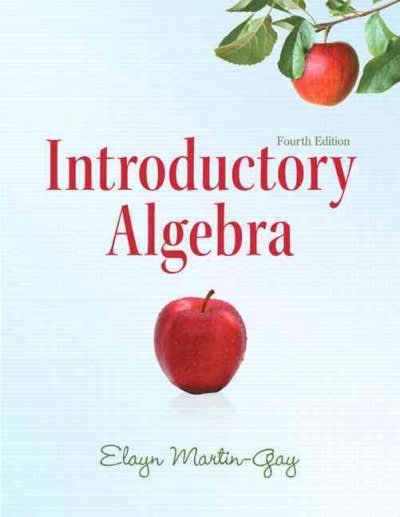Question
1. The events A, B, and C: P(A) = 0.4, P(B) = 0.6, P(C) = 0.2, P(A or B) = 0.8, and P(A and C)
1. The events A, B, and C: P(A) = 0.4, P(B) = 0.6, P(C) = 0.2, P(A or B) = 0.8, and P(A and C) = 0.1. (a) What is P (A or C)? (b) (2 points) Are events A and B complements? Why or why not? (c) (2 points) What is P(A|C)? (d) (2 points) Are events A and B independent? Why or why not?
2. Can you give an example of events A and B such that P (A|B) is larger than P (A)? Provide one such example or explain why such an example is not possible.
3. At Wimbledon a male tennis match can last 3, 4, or 5 sets. Suppose a tennis match lasts 3 sets with probability 0.2, 4 sets with probability 0.5, and 5 sets with probability 0.3.
(a) Write down the sample space for the random variable "the number of sets in a match".
(b) Write down a probability model for the random variable "the number of sets in a match".
(c) Calculate the mean number of sets in a match.
(d) Assume matches at Wimbledon are independent. Suppose now one plans to watch all 239 matches at Wimbledon. Describe the sample space for the random variable "the number of sets in 239 matches".
(e) Briefly describe how would you go about calculating the mean of this random variable from a probability model.
(f) Using the rules learned in class, calculate the mean number of sets in all 239 matches at Wimbledon.
(g) A female tennis match can last 2 sets with probability 0.6 or 3 sets with probability 0.4. If you plan to watch all 239 male tennis matches and all 211 female tennis matches, how many sets you would expect to watch in total?
Step by Step Solution
There are 3 Steps involved in it
Step: 1

Get Instant Access to Expert-Tailored Solutions
See step-by-step solutions with expert insights and AI powered tools for academic success
Step: 2

Step: 3

Ace Your Homework with AI
Get the answers you need in no time with our AI-driven, step-by-step assistance
Get Started


